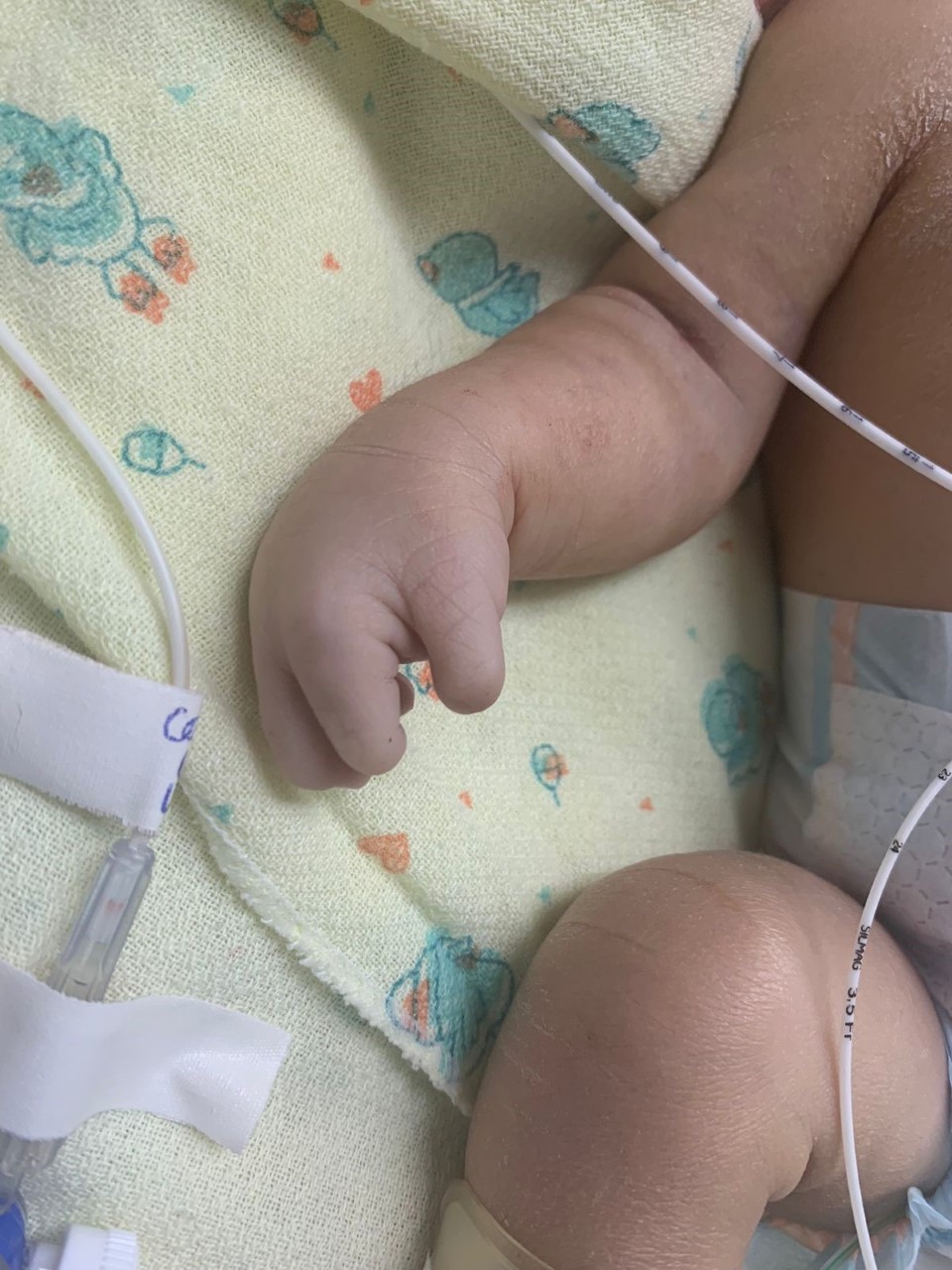Trisomy 9: first neonatal clinical case reported in Ecuador.
Main Article Content
Abstract
Background: Trisomy 9, or Rethoré syndrome, is the fourth most frequent chromosome disorder after trisomy 21, 13, and 18. This trisomy may be caused by partial or complete duplication of the short arm of chromosome 9; this may be caused by two cell lines with different genetic coexisting lineages found in the same person, or they can also present cases with segmental aneusomies. Case report: A male newborn of the fifth pregnancy of a 41-year-old mother with apparently normal controls and ultrasounds without reports of complications. At his birth, multiple craniofacial and extremity malformations were evidenced, associated with ambiguous genitalia. A physical examination and basic laboratory studies were used to define the phenotypic expression; transfontanellar echography reported hypoplasia or agenesia of the cerebellar vermis accompanied by cerebellar hypoplasia. The testicular echography did not identify testicles or masses. Due to the multiple malformations, a karyotype was carried out, reporting 47,XY,+9 in all the analyzed metaphases. Conclusion: Early prenatal detection is essential; the ultrasound data that was revealed in imaging studies, despite not being specific for aneuploidy, are the first step to continue with a cytogenetic study and identify the chromosomal pathology.
Downloads
Article Details

This work is licensed under a Creative Commons Attribution-NonCommercial-NoDerivatives 4.0 International License.
Creative Commons
License Attribution-NonCommercial-ShareAlike 4.0 International (CC BY-NC-SA 4.0)
You are free to:
Share - copy and redistribute the material in any medium or format.
Adapt - remix, transform, and build upon the material The licensor cannot revoke these freedoms as long as you follow the license terms.
• Attribution — You must give appropriate credit, provide a link to the license, and indicate if changes were made. You may do so in any reasonable manner, but not in any way that suggests the licensor endorses you or your use.
• NonCommercial — You may not use the material for commercial purposes.
• ShareAlike — If you remix, transform, or build upon the material, you must distribute your contributions under the same license as the original.
• No additional restrictions — You may not apply legal terms or technological measures that legally restrict others from doing anything the license permits.
References
Anomalías cromosomáticas, en: Cómo entender la genética: Una guía para pacientes y profesionales médicos en la región de Nueva York y el Atlántico Medio. Genetic Alliance, The New York-Mid-Atlantic Consortium for Genetic and Newborn Screening Services. Washington DC. Genetic Alliance; 2009.
San Román Muñoz M, Herranz Fernández JL, Tejerina Puente A, Arteaga Manjón-Cabeza R, López Grondona F. Trisomía 9p. An Pediatr (Barc). 2004;61(4):336–9.
Luna-Barrón B, Taboada-López G, Siacar-Bacarreza S, Lafuente-Álvarez E, Rada-Tarifa A, Contreras-Castro Darinka et al . Trisomía 9: Reporte de un caso. Cuad. - Hosp. Clín. 2019;60(1): 37-40.
Vaglio A, Mechoso B, Quadrelli A, Quadrelli R. Síndrome de trisomía 9p: características clínico-evolutivas y citogenéticas. Seguimiento de doce años. Arch. Pediatr. Urug. 2007;78(2):151-156.
Cammarat-Scalisi F. Trisomía 9p. Una breve descripción clínica, diagnóstica y terapéutica. Arch Argent Pediatr. 2019;117(5).
Monjagata R, Ascurra M. Trisomía parcial del cromosoma 9. Reporte de un caso. Mem. Inst. Investig. Cienc. Salud. 2022;3(1):71-73.





